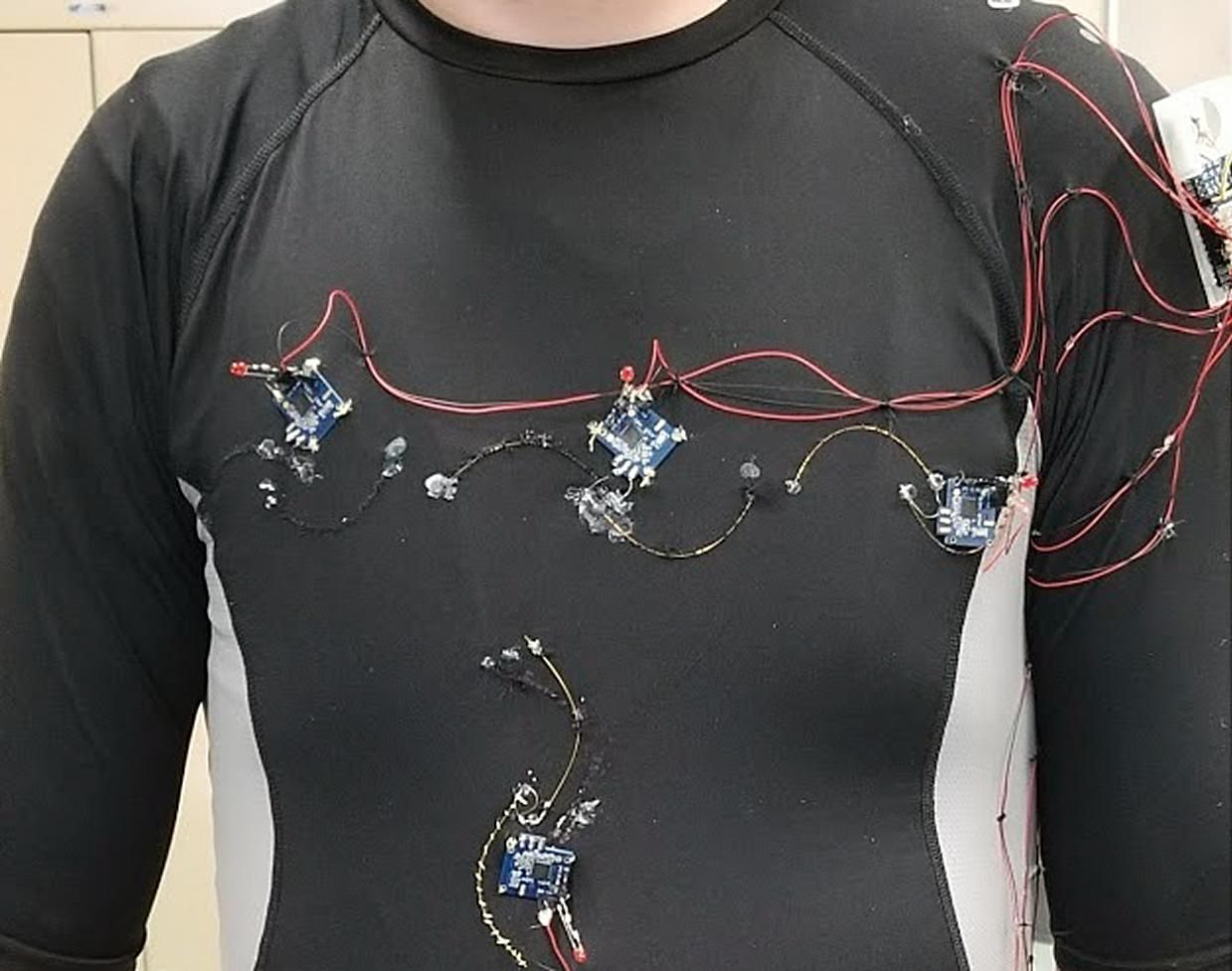Dress Smart: This T-Shirt Senses Breathing Problems
Prototype garment provides wireless, real-time monitoring of a wearer’s respiratory patterns
This article is part of our exclusive IEEE Journal Watch series in partnership with IEEE Xplore.
Clothes keep us warm, fashionable, and modest, but why stop there? A group of researchers in Canada has devised another use for clothing—they created a new smart T-shirt that can monitor the breathing of the person wearing it, which could be useful for a wide range of medical and athletic applications, among others.
Using the shirt to monitor a person’s vital signs would be advantageous for a number of reasons, including its ability to conform to different body types without restricting mobility or sacrificing comfort.
“We believe that such technology will be very useful in hospitals, to reduce opioid overdose deaths, and prevent active people from [overexertion],” says Amine Miled, an associate professor at the department of electrical and computer engineering at Université Laval in Quebec City, Canada.
The smart shirt designed by his team, including colleagues Marc-André Dugas and Younès Messaddeq, involves a network of thin, spiral antennas with Bluetooth capabilities embedded within the cloth. As the person wearing the shirt breathes in and out, the antennas deform slightly. A network of wireless sensors detect the deformations, and the data is transmitted wirelessly to a base station for analysis. In this way, a person’s breathing pattern can be measured and monitored.
The researchers tested their smart shirt in volunteers, and describe the results in a study published 28 December 2021 in IEEE Sensors Journal.
Through these experiments, it quickly became clear that people have vastly different breathing patterns, and especially among the sexes. For example, some people were more likely to breathe using their belly rather than their chest.
“We anticipated this challenge because the body of each person is unique,” says Miled. To account for this, the smart shirt was designed so that it can “pick” which of its six sensors—distributed across the upper and lower torso, either to the right, left, or center—is most accurate for monitoring the breathing of the individual wearer. When first put on, the shirt completes a scan of its sensors to determine which one is best suited for the wearer given their unique breathing patterns.
Miled says several companies have expressed interest in this tech, but some additional steps are needed before commercialization.
“The next step that is ongoing now is to compare our results with other approaches…and with the help of doctors, try to extract some [breathing] profiles of some common disorders,” says Miled, noting that the smart T-shirt is already able to detect sleep apnea. “We are also able to detect a significant change in breathing amplitude, [as well as] inspiration and expiration.”
Michelle Hampson is a freelance writer based in Halifax. She frequently contributes to Spectrum's Journal Watch coverage, which highlights newsworthy studies published in IEEE journals.
